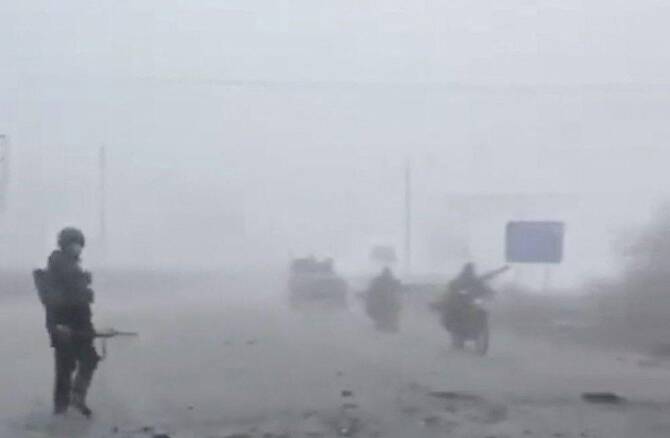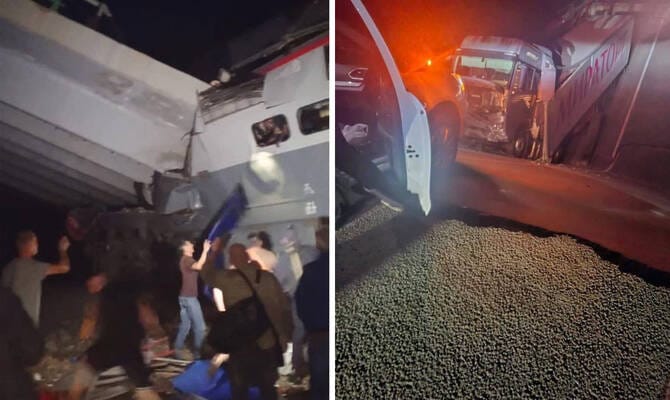A passenger train derailed in western Russia late Saturday after a bridge collapsed because of what local officials described as “illegal interference,” killing at least seven people and injuring 30.
The bridge in Russia’s Bryansk region, which borders Ukraine, was damaged “as a result of illegal interference in transport operations,” Moscow Railways said in a statement, without elaborating.
Russia’s federal road transportation agency, Rosavtodor, said the destroyed bridge passed above the railway tracks where the train was traveling.
Photos posted by government agencies from the scene appeared to show passenger cars from the train ripped apart and lying amid fallen concrete from the collapsed bridge. Other footage on social media appeared to be taken from inside other vehicles that narrowly avoided driving onto the bridge before it collapsed.
Bryansk regional Gov. Alexander Bogomaz said emergency services and government officials were working at the scene. He said seven people died and two children were among the 30 injured.
“Everything is being done to provide all necessary assistance to the victims,” he said. Russian officials have not said who is responsible for Saturday’s incident, but in the past some officials have accused pro-Ukrainian saboteurs of attacking Russia’s railway infrastructure. The details surrounding such incidents, however, are limited and cannot be independently verified.
Ukrainian media outlets reported in December 2023 that Kyiv’s top spy agency had successfully carried out two explosions on a railroad line in Siberia that serves as a key conduit for trade between Russia and China. Ukraine’s security services did not comment on the reports.
Russian Railways confirmed one of the explosions described by Ukrainian media, but did not say what had caused it. There was no comment from Russian authorities on a second explosion.
Read More

Ukraine, China mineral dominance on agenda as G7 meets
G7 foreign ministers were gathering in Canada on Tuesday for talks expected to focus on Ukraine, as the club of industrialized democracies seeks a path toward ending the four-year-old conflict. Options to fund Kyiv’s war needs against invasion by Russia could feature prominently at the talks in Canada’s

Russian forces roll ‘Mad Max’-style into battered Ukrainian city of Pokrovsk
Russia said its forces had pushed deeper into the eastern Ukrainian cities of Pokrovsk and Kupiansk on Tuesday, with one video showing Russian soldiers rolling into Pokrovsk on motorbikes and even on the roofs of battered cars and vans. Moscow says taking Pokrovsk, dubbed “the gateway to Donetsk” by Russian

French foreign minister says US military operations in Caribbean violate international law
France is worried about US military operations in the Caribbean because they violate international law, the country’s foreign minister Jean-Noel Barrot said on Tuesday. The US military has carried out at least 19 strikes so far against suspected drug vessels in the Caribbean and off the Pacific coasts of

Australia, Indonesia agree new security treaty: Albanese
Australia and Indonesia agreed on Wednesday to sign a security treaty, Prime Minister Anthony Albanese said, following talks in Sydney with President Prabowo Subianto. “The governments of Australia and Indonesia have just substantively concluded negotiations on a new bilateral treaty on our common security,” Albanese told journalists alongside Prabowo. “This

